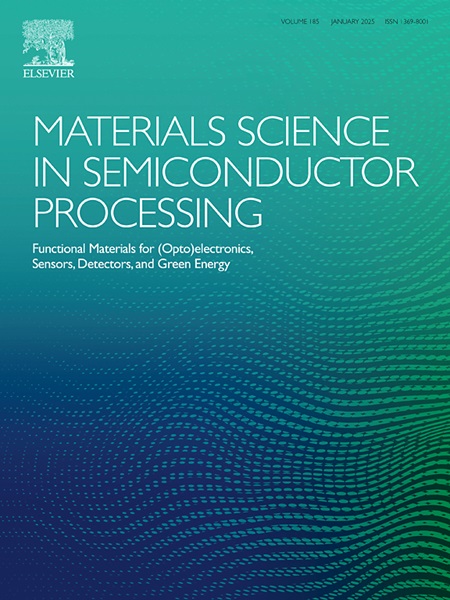Size evolution of silver nanowires under thermal field and its application in nano-healing: A molecular dynamics study
IF 4.6
3区 工程技术
Q2 ENGINEERING, ELECTRICAL & ELECTRONIC
引用次数: 0
Abstract
Laser-induced nano-healing plays a pivotal role in repairing structural defects in devices, primarily attributed to localized thermal fields generated by photothermal effects, which reduce nanogap sizes. However, the phenomenon of nanomaterial contraction into spheres under thermal fields indicates that the underlying mechanisms of nano-healing under thermal influence remain incompletely understood. This study employs molecular dynamics simulations to investigate the size evolution of silver nanowires under thermal fields, aiming to explore the effects of temperature on nanomaterial size changes and to further elucidate the mechanisms of nano-healing applications. The findings reveal that temperatures during the surface melting phase, below the melting point, promote the attainment of larger axial sizes in silver nanowires. The axial dimensions of silver nanowires are influenced not only by temperature-induced lattice spacing but also by the transport of atoms toward the central regions of end faces driven by surface melting. The study demonstrates that temperatures during the surface melting phase are more favorable for the healing of nanogaps, with higher temperatures enhancing the surface diffusion healing of nanoscale pits. These results provide valuable insights into the utilization of thermal fields for nano-healing and the subsequent repair of device defects.

热场下银纳米线的尺寸演化及其在纳米愈合中的应用:分子动力学研究
激光诱导的纳米修复在修复器件结构缺陷中起着关键作用,主要是由于光热效应产生的局部热场减小了纳米间隙的尺寸。然而,纳米材料在热场下收缩成球体的现象表明,热影响下纳米愈合的潜在机制仍然不完全清楚。本研究采用分子动力学模拟方法研究热场作用下银纳米线的尺寸演变,旨在探索温度对纳米材料尺寸变化的影响,并进一步阐明纳米愈合应用的机制。研究结果表明,低于熔点的表面熔化阶段温度有助于银纳米线获得更大的轴向尺寸。银纳米线的轴向尺寸不仅受温度引起的晶格间距的影响,还受表面熔化驱动原子向端面中心区域迁移的影响。研究表明,表面熔化阶段的温度更有利于纳米间隙的愈合,较高的温度有利于纳米凹坑的表面扩散愈合。这些结果为利用热场进行纳米修复和随后的器件缺陷修复提供了有价值的见解。
本文章由计算机程序翻译,如有差异,请以英文原文为准。
求助全文
约1分钟内获得全文
求助全文
来源期刊

Materials Science in Semiconductor Processing
工程技术-材料科学:综合
CiteScore
8.00
自引率
4.90%
发文量
780
审稿时长
42 days
期刊介绍:
Materials Science in Semiconductor Processing provides a unique forum for the discussion of novel processing, applications and theoretical studies of functional materials and devices for (opto)electronics, sensors, detectors, biotechnology and green energy.
Each issue will aim to provide a snapshot of current insights, new achievements, breakthroughs and future trends in such diverse fields as microelectronics, energy conversion and storage, communications, biotechnology, (photo)catalysis, nano- and thin-film technology, hybrid and composite materials, chemical processing, vapor-phase deposition, device fabrication, and modelling, which are the backbone of advanced semiconductor processing and applications.
Coverage will include: advanced lithography for submicron devices; etching and related topics; ion implantation; damage evolution and related issues; plasma and thermal CVD; rapid thermal processing; advanced metallization and interconnect schemes; thin dielectric layers, oxidation; sol-gel processing; chemical bath and (electro)chemical deposition; compound semiconductor processing; new non-oxide materials and their applications; (macro)molecular and hybrid materials; molecular dynamics, ab-initio methods, Monte Carlo, etc.; new materials and processes for discrete and integrated circuits; magnetic materials and spintronics; heterostructures and quantum devices; engineering of the electrical and optical properties of semiconductors; crystal growth mechanisms; reliability, defect density, intrinsic impurities and defects.
 求助内容:
求助内容: 应助结果提醒方式:
应助结果提醒方式:


